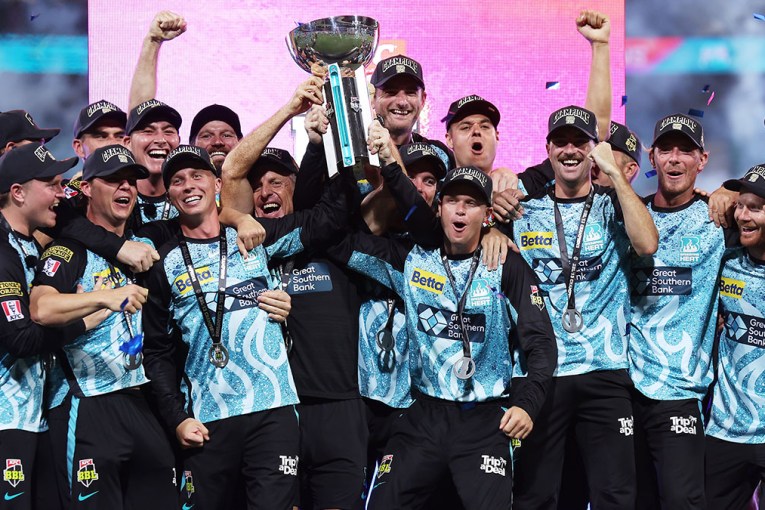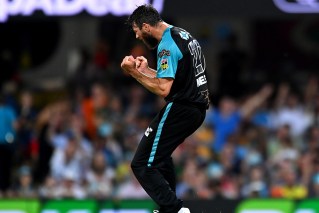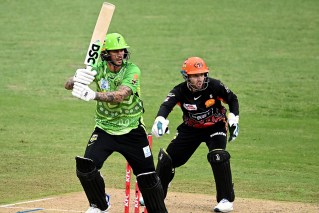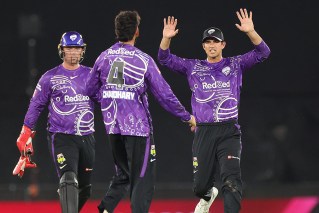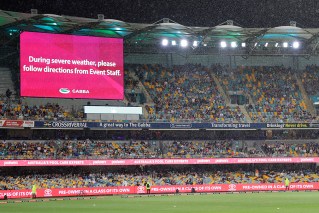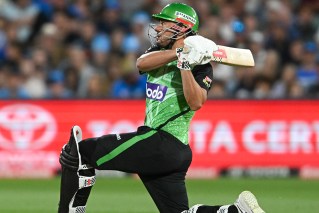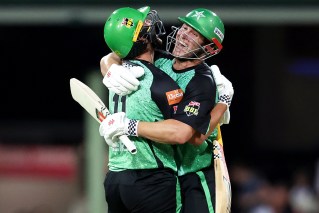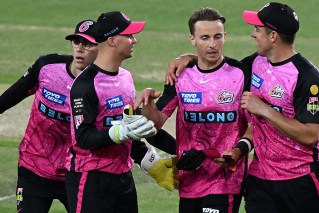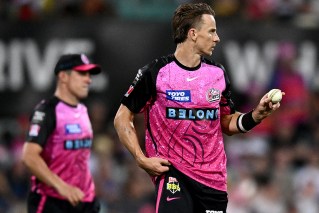How the Big Bash League took Australia’s sporting landscape by storm

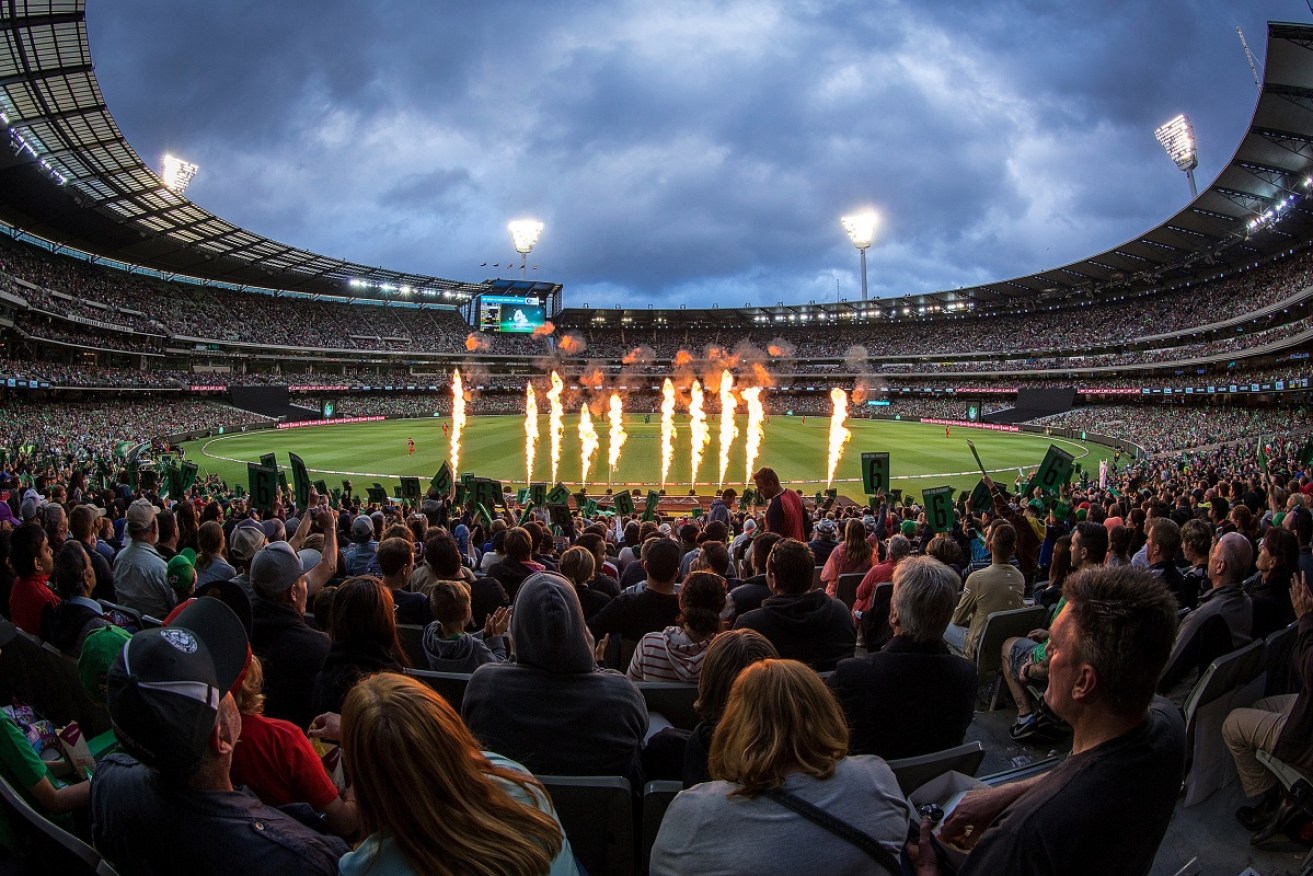
The Big Bash League is so successful that it should be expanded overseas, some say. Photo: Getty
The Big Bash League (BBL) is back bolder and better than ever, or that’s the line we’re being sold.
Now embracing women’s and men’s leagues, it certainly rivals the Australian Open tennis as the summer’s biggest, brashest and most popular sport spectacle.
Except for the Sydney Test starting on Tuesday, two weeks of the Australian Open and the A-League, there’s not a lot of sport on offer during January.
Twenty3 Sports and Entertainment’s CEO John Tripodi suggests this gap in the market provided an “opportunity for one sport or code to take ownership of the summer period”, which the BBL has done.
The season slogged off in mid-December with the women’s weekend BBL at North Sydney Oval.
The men’s BBL started on the last Tuesday night in December with the Sydney derby between the Sixers and Thunder before a record crowd of 21,798 at Spotless Stadium.
In its sixth summer, the BBL has become the cricket calendar’s marquee attraction.
But questions remain over why it has grown so popular, while alienating many cricket traditionalists.
For Test lovers, it has hijacked the season and trivialised the game.
For Cricket Australia’s (CA) decision-makers, it has saved the game from irrelevancy in an increasingly competitive Australian sports market.
In 2010, cricket was at the crossroads.
It had lost a generation of Test and one-day international champions, and was struggling on and off the field.
CA’s board was forced to address a core question: was the game as it was then structured well-placed to compete in the emerging Australian sports market?
The answer was a resounding ‘no’. Cricket was too middle-aged, white and ‘blokey’.
According to CA’s then general manager of operations Mike McKenna, cricket was losing the youth market.

Kids are key to the BBL for Cricket Australia. Photo: Getty
“We had research that showed for boys aged under 15, cricket was their seventh-favourite sport and for girls it was their 14th,” McKenna told Fairfax Media.
The BBL provided a pathway for getting kids and their families involved in the game and it has succeeded.
According to Monash University’s media and communications researcher, Associate Professor Brett Hutchins, “the Big Bash knew its target market, the younger fans, and they dragged their parents along”.
To package the BBL for families, CA approached Dan Migala, the head of the Chicago-based sports marketing firm Property Consulting Group.

Cricket isn’t the only attraction at the BBL. Photo: Getty
He had worked with MLB, NBA and NFL franchises, and considered sport part of the entertainment industry.
According to Migala, fans often forgot the results of games but always remembered the show.
He held that the BBL’s success depended upon “deliver[ing] entertainment that also happened to have a cricket match involved”.
Pivotal was packaging the BBL, not for rusted-on traditionalists, but for children and mums new to the game.
The result was a quick three-hour entertainment spectacular with enough glitz, glamour and pyrotechnics to hook the family into returning for more.
As Tripodi suggests, the BBL is “a perfect fusion of sport and entertainment”.
Cricket remains its core product, he added, but there are enough “value-added entertainment initiatives” to keep the kids interested.
Hutchins is more guarded: “[The BBL] is easy to watch and easier to forget, but it drags in the kids and their parents.”
TV ready
It’s also a snug three-hour fit for primetime television.
The BBL’s early years were hamstrung by CA’s broadcast rights deal with pay-TV provider Fox Sports, which limited its audience.
In 2013, CA entered a five-year, $100 million deal with the free-to-air Ten Network. As Tripodi explains, this was “a great move”.

Ten’s Big Bash team is award-winning. Photo: Getty
The BBL has proved “a great television product” which captures onscreen “the fan experience” of being at the match.
As a result, the coverage has increased viewer demand to experience the BBL live, Tripodi added. Another winner is the length of the BBL season. It slots neatly into the school holiday period.
From its inception, tickets were pegged at affordable prices to attract kids and families.
As McKenna explained, this ensured “there [wa]s no barrier to entry”. The BBL’s major sponsors – KFC, Weet Bix and Zooper Dooper – are marketed as family-friendly brands.
The BBL has made eating fried chook fun. It has even enabled KFC to reposition its brand in a family-friendly environment when the fast food industry is under fire from health professionals.
Anti-gambling stance
Unlike other sports, the BBL has shied away from gambling and alcohol sponsors.
“There is a place for gambling and sport, and it is a relevant place, but certainly not when you are targeting your sport at kids,” declared McKenna.

Chris Gayle was made an example of. Photo: Getty
Indeed, there’s no place for anything or anyone that trashes the BBL’s family-friendly brand.
Despite his explosive batting, Chris Gayle was not rehired by the Melbourne Renegades after his “don’t blush, baby” remark to Ten’s Mel McLaughlin.
As BBL head Anthony Everard explained, Gayle’s departure “gave us a chance to reaffirm what the BBL is about … It is a family-friendly league that welcomes women which is why [Gayle’s remark] disappointed us so much”.
The affirmation is evident in the BBL’s growing popularity. It has not only grabbed a sizeable slice of the summer sport market, but is now listed among the top-10 best attended sport leagues globally.
Crowd boom
After bottoming out with average attendances of 14,883 in 2012-13, the BBL’s popularity spiked last season.
Total attendances topped the million mark.
On average 29,443 attended each game, placing the BBL just behind the AFL (33,428) and above the NRL (14,994).
Television ratings also boomed. Around 1.13 million viewers watched each game last season, an 18 per cent jump on 2014-15. That’s more than the AFL and NRL.
Tellingly, 35 per cent were females, indicating that the Bash’s marketing strategy had cut through.

Crowd figures have been absolutely stunning. Photo: Getty
From drive-to-school days with star players to monster-truck promotions and endless post-game autograph signing sessions, the BBL has cultivated the mum and kid’s market.
In doing so, CA has collaborated with entertainment industry heavyweights. During the 2015-16 season, CA and Warner Bros joined forces to promote the film Batman v Superman during BBL games.
In the off-season, CA executives and franchise managers toured key US entertainment organisations and events, such as Disney, Ringling Bros, Circus and the Mascot Games in Orlando.
According to Everard, the tour offered an “insight into how children see entertainment, particularly sport”. CA has since joined forces with the children’s entertainment network Nickelodeon to produce Crash the Bash.
A kids show with a Big Bash flavour, it will screen on the Ten and the Nickelodeon networks throughout the season.
Traditional alienation
Despite chasing the family dollar, the Bash’s biggest weakness remains its alienation of the traditional cricket follower.
Rob Kelly was prepared to give the BBL a go.
A cricket traditionalist who likes a quiet day at the Sheffield Shield, he was an early supporter of the Melbourne Renegades.
He even bought a Renegades cap and membership. After attending for a few seasons he found that BBL games were not for him.
He downgraded his membership and now watches games on television.
“It’s better than putting up with all the promotional stuff. I just want to see a game of cricket,” Kelly explained.

Brad Hogg, 45, has adapted to T20 despite his vintage. Photo: Getty
The BBL has been a marketing triumph, but it has not embraced traditionalists like Kelly.
But it has provided CA with much-needed revenue to plug shortfalls in the game’s traditional international market.
Only Indian and Ashes tours pay their way.
As CA chair David Peever explained at last October’s AGM, this creates a ‘lumpy’ budget which BBL revenues help offset.
Peever maintains that the BBL ensures the viability of cricket’s traditional forms and its long-term future.
In terms of participation rates, cricket now outstrips all other sports, according to CA’s recent National Cricket Census. Over 1.3 million played some form of the game during the 2015-16 season, of whom 24 per cent were women.
The BBL’s popularity has fed into this. But whether this feeds into long-term support for more traditional forms of the game is yet to be seen.
As Hutchins suggests, “kids have grown with the T20 market, so unlike the cricket traditionalist, they consider Big Bash teams real teams”.
They have a greater affinity with a BBL franchise than a state or national team.
This generational shift will solidify T20’s place as the main form of the game in coming decades. The BBL has been a triumph of slickly targeted, Americanised sports-entertainment marketing.
For the rusted-on traditionalists, it may not be cricket. But for cricket’s emerging generation of followers, it will be the only form of the game.
